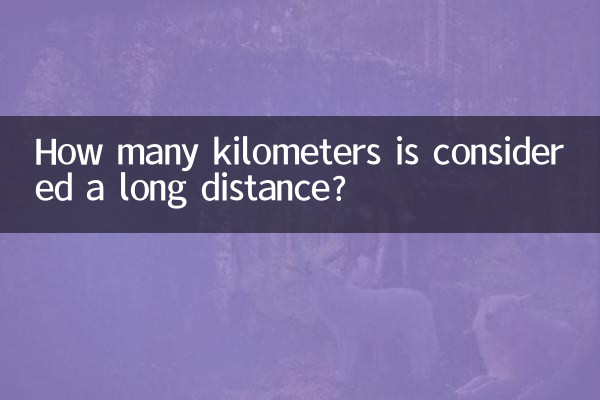How many kilometers is considered a long distance? ——Comprehensive analysis from data to experience
With the popularity of self-driving travel and logistics transportation, the concept of "long distance" appears frequently in life. But how many kilometers is considered a long distance? This article combines discussions and structured data on hot topics across the Internet in the past 10 days to answer your questions from different angles.
1. “Long distance” standards in different fields

| field | Long distance standard (km) | Data source |
|---|---|---|
| self drive travel | 300+ | Survey on an automobile forum (2023) |
| Logistics and transportation | 800+ | National Logistics Association Standards |
| Cycling activities | 100+ | A cycling APP user voted |
| New energy vehicles | 200+ (requires charging) | Industry technology white paper |
2. The controversial issue of “long distance” among hot topics
In the past 10 days of discussions across the Internet, there have been three major points of controversy regarding the definition of long distance:
1.Regional differences: Users in the north generally believe that 500 kilometers is considered a long distance, while users in the south generally believe that 300 kilometers is enough to plan accommodation.
2.Impact of transportation: High-speed rail passengers think that more than 3 hours is considered a long distance (about 1,000 kilometers), while truck drivers think that only 2,000 kilometers require additional subsidies.
3.New energy challenges: Electric vehicle owners regard the “distance requiring mid-way charging” as a long distance, and this standard is 40% lower than that of fuel vehicles.
3. Long-distance threshold from an ergonomic perspective
| fatigue type | Driving distance (km) | Physiological manifestations |
|---|---|---|
| mild fatigue | 200-300 | Reaction speed decreased by 15% |
| moderate fatigue | 400-500 | Judgment error rate increased by 2 times |
| dangerous fatigue | 600+ | The incidence rate of microsleep is 80% |
4. Practical suggestions: How to deal with long distances of different distances
1.200-300 kilometers: Prepare energy supplies and take mandatory breaks every 2 hours, suitable for day trips.
2.300-500 kilometers: A dual-driver system is recommended, and a meal stop needs to be planned.
3.More than 500 kilometers: Accommodation must be arranged, vehicles must be fully overhauled, and emergency supplies must be carried.
5. Future Trends: Redefining Long Distance
With the development of autonomous driving technology, the concept of "effective time distance" proposed by a technology blogger has sparked heated discussions - taking 3 hours of pure ride time as the new long-distance standard, then:
| technical stage | Corresponding distance (km) | human engagement |
|---|---|---|
| L2 level assisted driving | 400 | Full monitoring |
| L4 level autonomous driving | 800+ | emergency intervention only |
Conclusion: Long distance is not only a numerical concept, but also a dynamic standard that integrates the factors of people, vehicles and roads. It is recommended to conduct a dynamic assessment based on the latest road conditions, vehicle status and personal physical fitness before traveling.

check the details

check the details